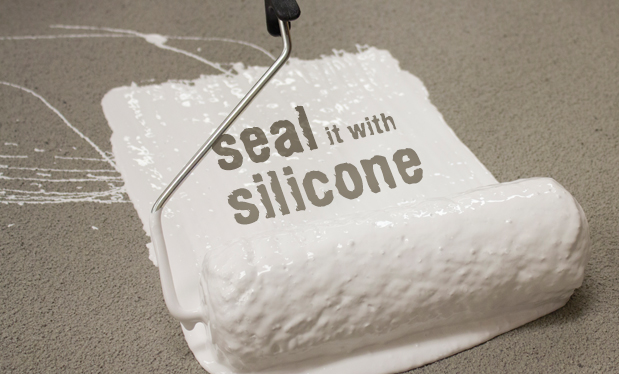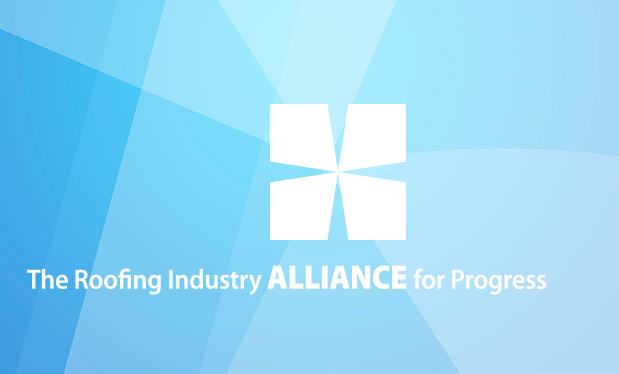When you are asked to replace a roof system that has exhausted its serviceable life, you know the building owner probably will be looking for ways to enhance the roof system's energy performance. And, of course, energy codes require minimum R-values that frequently necessitate increasing insulation within walls and roofs to reduce energy consumption. Although a seemingly worthwhile venture, there are consequences of adding insulation in colder climates, such as accounting for the additional dead load placed on the structure by the insulation, as well as snow loads.
Start with R-value
To illustrate the implications of adding additional R-value to an existing roof system, it is necessary to review the design criteria in effect when the building was constructed. As recently as 30 years ago, the building industry seemed to pay little attention to the need for insulation in roof systems. Before the 1970s, no specific insulation requirements were imposed on buildings. From the 1960s through the late 1970s, the Uniform Building Code (UBC) only stipulated the use of combustible insulation was permitted provided it was covered with an approved material in all types of construction, but no R-value requirements were noted.
Energy use first became a concern for building code organizations after the 1973 oil embargo. About this time, the National Conference of States on Building Codes and National Bureau of Standards (NBS) developed a draft performance standard for energy-efficient buildings. NBS issued an interim report, 74-452, which was further developed by ASHRAE Inc. ASHRAE subsequently released consensus standard 90-75, "Energy Conservation in New Building Design," in conjunction with the U.S. model building code organizations. ASHRAE's 90-75 document ultimately was published by the Council of American Building Officials and became known as the Model Energy Code (MEC) in 1977. However, there was resistance in the building industry, and it was not until the late 1980s that building codes began to include requirements to improve energy performance.
The 1976 UBC required insulation to be a rigid type suitable to receive a roof covering. It also required a "vapor barrier" be installed over the roof deck when the average winter temperatures were expected to be below 45 F or where excessive moisture conditions were anticipated within the building. This code still did not include minimum R-value requirements.
It was not until 1978 that the Building Officials Code Administrators (BOCA) building code included an energy conservation section. In this document, R-value requirements were quite low by current standards. The 1978 BOCA building code established minimum R-values for entire roof assemblies over heated structures ranging from 10 to 17 based on heating degree days for the region in which a building was located. The code does not differentiate between low-slope or steep-slope roofs with regard to this requirement. For a roof and ceiling assembly in which the finished interior surface is essentially the underside of the roof deck, such as a wooden cathedral ceiling, the R-value could be reduced to 12.5 for any heating degree day area for residential buildings less than three stories. At this time, UBC included comparable requirements and referenced MEC.
Through the 1980s, ASHRAE further developed its standards for commercial and high-rise buildings and in 1989 published Standard 90.1-1989, "Energy Efficient Design of New Buildings Except Low-Rise Residential." This standard, which only applied to new construction, used an equation to calculate insulation requirements. Subsequently, the International Energy Code (IEC) has evolved and additional requirements for insulation increases have followed. The most recent edition is the 2012 IEC, which includes R-value requirements for insulation in commercial roof systems that range from 25 to as high as 49.
Consider the snow
While changes in insulation requirements were occurring, adjustments also were being made to code-prescribed snow loads by the American Standards Association (ASA) Inc., which preceded the American National Standards Institute. ASA A58.1 and ANSI A58.1, "Minimum Design Loads for Buildings and Other Structures," which preceded ASCE 7, "Minimum Design Loads for Buildings and Other Structures," was a consensus standard that had been the basis for design snow load criteria for the model building codes. The International Code Council (ICC) has adopted ASCE 7 for building design loads. Following is a brief outline of snow load changes during the past 60 years:
- ASA A58.1-1955 provided snow load maps that identified the estimated weight of snowpack for a 10-year reoccurrence based on information provided by the U.S. Weather Bureau at that time. Reductions in snow loads were permitted for roof slopes that exceeded 20 degrees, but a minimum live roof load of 20 pounds per square foot (psf) was maintained to account for loads attributed to roof system repair and maintenance. Requirements for special snow load conditions were deferred to the local building official. The standard stated the designer must be cognizant of such conditions, but no criteria were presented for drifting snow loads.
- ANSI A58.1-1972 provided snow load maps for 25-, 50- and 100-year mean reoccurrence intervals for ground snow load. The reoccurrence levels would be applied based on anticipated risk to human life or building occupancy (a 25-year reoccurrence for buildings with no human occupants or negligible risk to human life; 50-year reoccurrence for all permanent structures; and 100-year reoccurrence for high risk of hazard or threat to life and property in case of failure). Snow load reductions were permitted for slopes that exceed 30 degrees (an increase from the previous version) and up to a 40 percent reduction was permitted at fully clear exposed roofs unobstructed by wind. The standard also included provisions for drifting snow with a drift height limit equal to three times the ground snow load where the snow density was assumed to be 15 pounds per cubic foot (pcf). Special snow load zones were recognized through the mountain regions in the western U.S.
- ANSI A58.1-1982 provided a single snow load map and introduced importance factors to adjust loads for building occupancies and anticipated risk considerations. Factors also were added to adjust loads based on roof surface texture and whether a building was heated (which considered melting snow potential). Calculations further permitted snow load reductions where roof slopes exceed 15 degrees depending on heated or unheated conditions and roof surfaces. The snow density also was characterized as being 15 to 25 pcf based on the probable ground snow load. Additional snow load reductions were permitted for roofs with clear exposure. Snow-drift loads were applied on top of the balanced snow load, resulting in a maximum snowdrift load that was about three times the probable ground snow load, similar to the standard's 1972 version.
- ASCE 7-88 was a revision to ANSI A58.1-1982, and subsequent versions of ASCE 7 have become the referenced document for design loads in current ICC building codes. ASCE 7 criteria changed drift heights to correspond with building geometry. Prescribed drift heights for design loads were altered to consider the extent of roof area that could provide drifting snow, and the drift height was limited only by the building profile. Consequently, drift loads increased significantly. Later versions of ASCE 7 included information regarding windward and leeward snowdrift scenarios.
Model building codes from the 1950s through the mid-1970s only required a uniform snow load and an unbalanced snow load; drifting snow loads were not mentioned; and codes only stated a roof system's design was to account for extra snow loads at roof valley locations. Consequently, the actual loading required was highly subjective. Where potential for snowdrift loads occurred, the codes stated these "special loaded areas were to be determined by the building official."
ANSI A58.1-1972 was referenced in the 1975 BOCA building code, and ANSI A58.1-1982 was referenced in the 1987 BOCA building code. It was not until around 1990 that current code requirements for snowdrift loads came into effect.
What does this mean?
Changes to code requirements are slow-moving. Partly in an effort to be sympathetic to building owners and operators, code upgrades are not instantaneous and take time to be adopted by different jurisdictions. As a result, if you have a project on a building that was constructed during or before the early 1970s, it is possible the building was designed with little, if any, roof insulation and the roof may have been designed for a snow load as low as 12 psf.
To help understand the significance of these loads, 12 psf is roughly equivalent to an 8-inch depth of snow cover, assuming a 17-pcf density. (Studies of snow weight accumulation on building roofs performed after the Chicago storms of 1979 revealed the weight of snow ranged from about 12 to 24 pcf with an average of about 17 pcf). For a building with a 20-psf design load and no drift provisions, snow load capacity may be limited to a snow depth of about 14 inches to maintain acceptable deflections and stress levels within the roof structure.
With minimal insulation, older building designs with reduced load capacities can survive heavy snow conditions because a significant portion of snow will melt from heat escaping through the roof. As a result, these roofs may not have experienced a code-prescribed loading event.
When adding insulation as part of a reroofing project, it is important to understand a roof structure's adequacy to support the added weight of insulation and realistic snow loads. With added insulation, the potential for increased snow loads on a building's roof can be significant. The increased R-value will reduce the potential for heat to escape from the building and melt snow and ice off of the roof. Consequently, a greater potential is introduced for snow accumulation and drifting on roofs that would not have existed with the previous lower R-values. As a result, there is a potential for greater snow and ice accumulation on roofs with higher R-values. These conditions can be of greater concern for buildings constructed before 1975.
To address these concerns, even if not required by local building codes, designers and building owners involved with reroofing challenges that require R-value improvements should ensure the effects on the structure are properly evaluated as part of the project.
Timothy M. Crowe, RA, SE, PE, is an associate principal with Wiss, Janney, Elstner Associates Inc., Northbrook, Ill.



